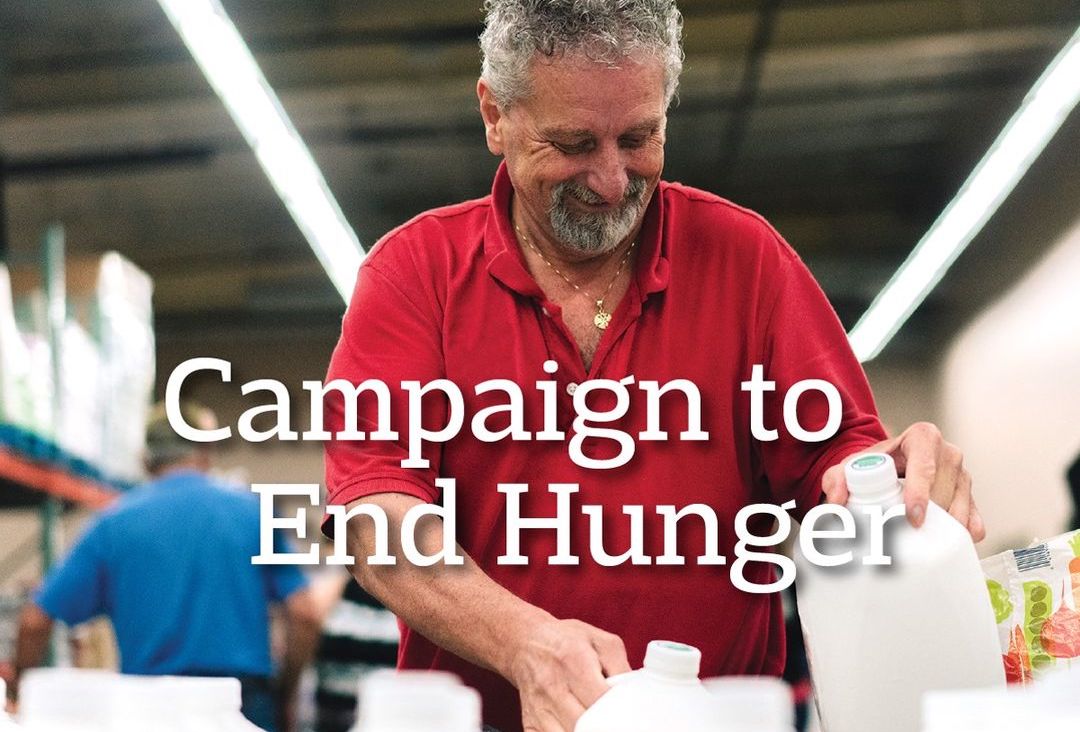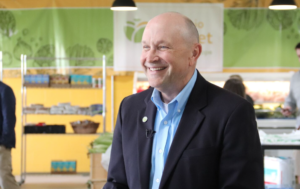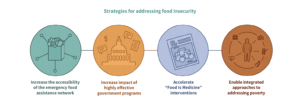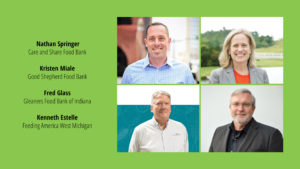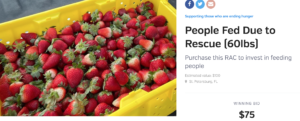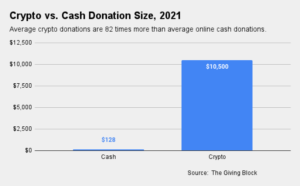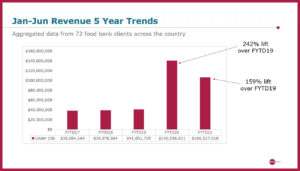As it seeks to generate $250 million to end hunger in Maine by 2025, Good Shepherd Food Bank is pushing new frontiers in how food banks raise funds.
The campaign, announced during the last week of January, stands out for both its size and scope. The goal is flat-out huge when compared to other recent fundraising initiatives among food banks — even large ones such as Greater Chicago Food Depository’s goal of raising $50 million for a new meal-prep facility or Second Harvest of Silicon Valley’s success in generating $30 million at the end of 2020.
The campaign also differs from most because it will last for four years. While multi-year efforts sometimes characterize one-time capital campaigns (say for a new building), they are not generally used to fund ongoing operations, as Good Shepherd is doing. “No one’s ever framed it this way,” said Kristen Miale, President of Good Shepherd, the largest food bank in Maine, according to Food Bank News’ listing of the top 100 food banks.
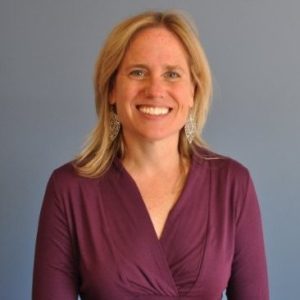
The new approach is needed to reach Good Shepherd’s equally big goal of ending hunger, officials say. In 2015, when the food bank first articulated its goal of ending hunger in Maine by 2025, it estimated it would need to provide 33.5 million meals annually. Now because of the pandemic and an estimated 25% increase in hunger in Maine, it is gearing up to provide 40 million meals per year.
With its big-picture, multi-year fundraising approach, Good Shepherd expects to generate a steady stream of funds on an ongoing basis. “It gets us off that hamster wheel of year-to-year funding,” Miale said.
The approach also streamlines the planning process. Staffers no longer need to, for example, ask permission to make a new hire based on whether a certain grant or fundraiser comes through. “We’re getting rid of that scarcity mentality,” Miale said.
Further, Good Shepherd has more flexibility in how it can use the funds, since it is asking funders to support an overall plan, not a specific program. “It’s really decreased the amount of restricted gifts we’re getting,” Miale said, adding that funders are responding positively to the messaging.
Having recently raised $5 million in a separate capital campaign that funded a new warehouse built in 2019, the food bank is now looking outward. It will use funds from the $250 million campaign to increase the capacity of the 600 or so pantries in its network, 97% of which stayed open during the pandemic.
The money will go toward standard capacity-building expenses, such as refrigeration and storage, as well as grants aimed at getting pantries to meet various best practices, including being open at least once a week and having evening or weekend hours, as well as a nutrition policy and culturally relevant food.
Other funds will go toward making food deliveries to 100% of the pantries, rather than require them to go to a central location to pick up food. Weekly deliveries would make it much easier for pantries to offer more food, more frequently, Miale said. “We see it as an equity issue.”
To get to extended hours, Good Shepherd is looking to partner with community organizations that already have weekend or evening hours, such as libraries and health care centers. Another way for pantries to extend their hours is to offer stipends to volunteer workers, Miale noted.
Good Shepherd might also build its own community food centers that would include wraparound services, such as SNAP and WIC offices. “Our philosophy is to come with ideas, best practices, resources and intent to help, and let community members tell us the best way,” Miale said.
To get funds out to the pantries, Good Shepherd is leaning toward a very low-barrier grant-making process that would be guided by a 15-member advisory council made up of community participants. “We’re trying to not have all the decision-making come from us,” Miale said.
In recent months as it has reached out to the community, Good Shepherd has gained greater insight into the various populations it serves. For example, gift cards to a local grocery chain and pre-packed boxes of food distributed during Covid turned out to be a flop in many immigrant communities whose members did not shop at that chain nor eat those foods. “Now that we have those relationships, we’re asking them, ‘What does food access need to look like?’” Miale said.
Of its $250 million goal, Good Shepherd has already raised $115 million in donated food and funds, following a soft launch that began two years ago. The food bank is also part of a group that has benefitted from the giving of philanthropist Mackenzie Scott, receiving $25 million. The overall plan is to raise $100 million in cash and pledges, and $150 million in donated food before the end of 2025.
Once that goal is achieved and the food bank is consistently providing 40 million meals a year, then it can work on putting itself out of business, Miale said. “I do not want to be here 40 years from now with another big campaign.”
Like what you’re reading?
Support Food Bank News
Connect with Us:
